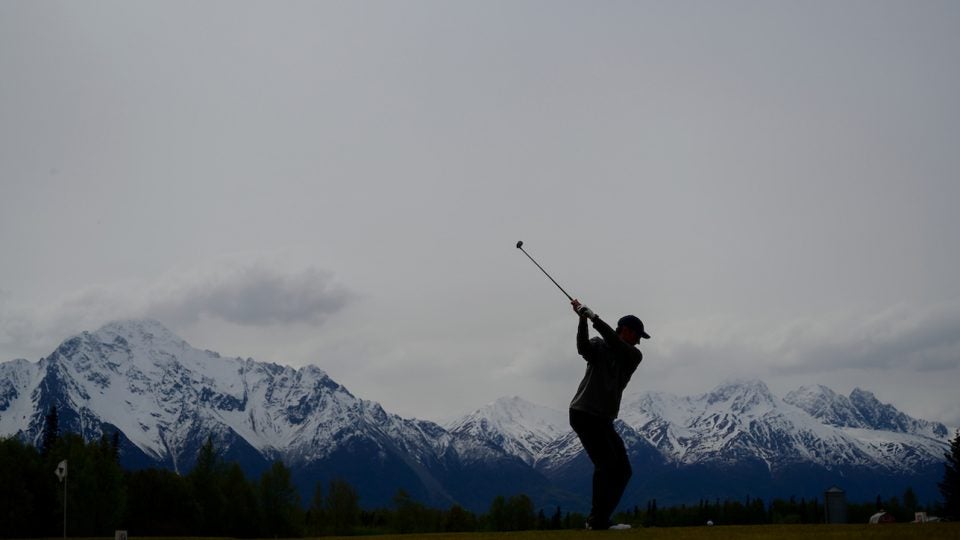Every year, close to 10,000 golfers sign up to compete in U.S. Open local qualifying events, with usually 80 or 100 players in each, battling hard and dreaming big. Most of these tournaments are clustered around golf ’s epicenters: Florida, Arizona, California. But one — probably the smallest, coldest, grittiest qualifier in the world — takes place at a municipal golf course in Palmer, Alaska. Annually, just a dozen or so players register for the event. But its size doesn’t diminish its importance — it enhances it.
I went to Alaska in search of those dozen dreamers. But as I wandered America’s largest state, encountering courses and competitors as I traveled north from tiny Homer in south central Alaska, through Soldotna and Anchorage and ultimately to Palmer, I discovered a deeply warm small-town feel and a purer golf ethos than I’d experienced anywhere in the lower 48.
What does the dawn of the golf season look like in the land of the midnight sun? And what does it mean to chase a golf dream in the Frontier State? I started with a small idea and stumbled onto a whole new world. I entered the qualifier, too, which had an ending so perfect I couldn’t have scripted it.
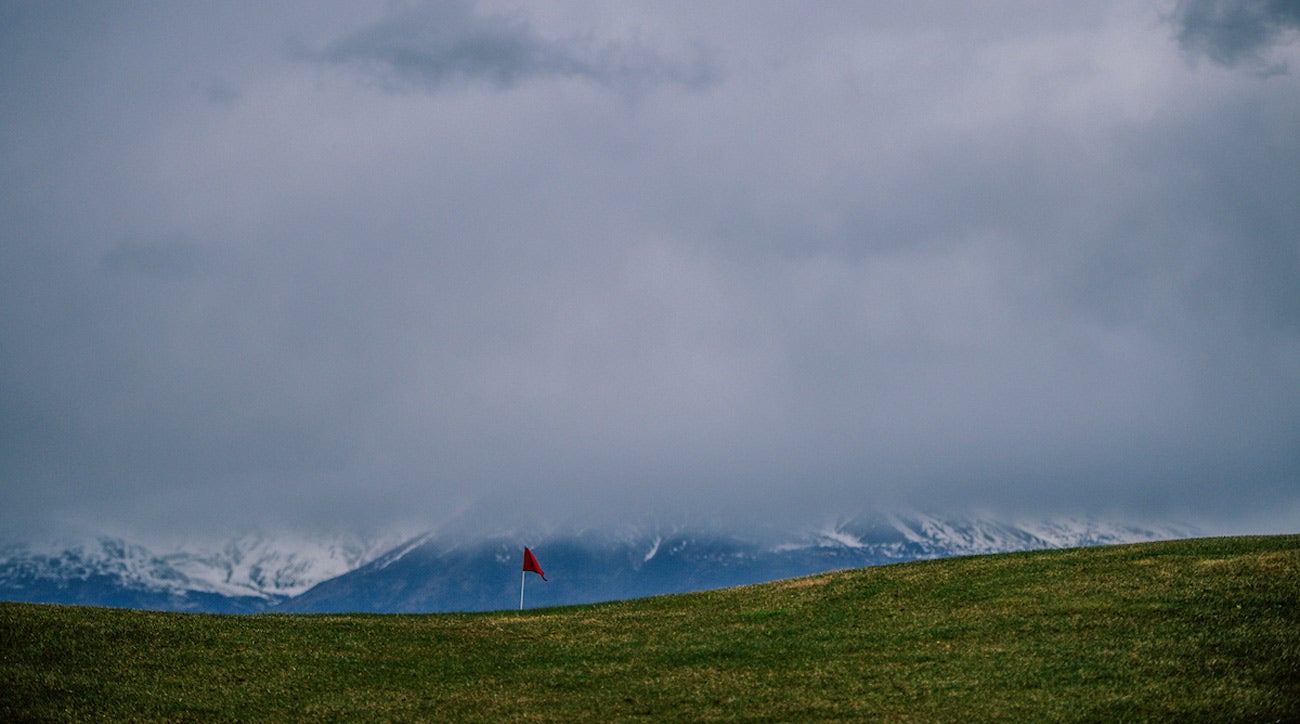
TUESDAY
Homer, Alaska: Six days to qualifier
The regulars at Homer Golf Course know the rule: If you’re the last golfer out, close the gate. It’s the only chance you’ve got of keeping out the moose. Some 18 hours after my day began in New York City, I pull through that gate and onto the grounds of Alaska’s smallest golf course. I should be weary, but even at 8 p.m. the sun hasn’t begun to threaten the horizon, and as I tumble out of my Rav4 rental, the fresh air at this mini golf nirvana jolts me to life.
Scott and Esa Woodland, the owners of Homer GC, spill out the door of their home, which sits left of the parking lot. I’m greeted like an old friend. One truck pulls up the driveway, and then one behind it. The excitable Chris Morin, a local contractor, emerges flashing a sixer and a grin. Elementary school teacher Michael Houghton is right behind him.
It was around this time six years ago that the Woodlands first set eyes on their nine-hole track. “We drove up, just like you, took a look at the place, said ‘This is pretty cool,’ and nine holes later we were basically buying it,” Scott remembers.
We have a foursome now, which means it’s time for my own conversion. Within minutes of my arrival, we’re teeing it up, and the course sprawls out before us. Nine greens, each visible from the first tee, though only a local would know which tee leads to which green — and in which order. This is a golf playground. Beyond the far edge of the course the world expands: beach, the blue of Halibut Cove, and the peaks and glaciers of Kachemak Bay State Park.
The top greens fee at Homer is $20, which grants you unlimited play. The longest hole is just under 130 yards. Most rounds are paid for on the honor system at a self-check machine by the pro shop. Rental clubs are available. So are balls and tees. Nobody ends up in Homer, Alaska, by mistake. But not everyone comes here with golf in mind.
Still, the Woodlands relish every arrival. “In my day-to-day job, I’m in the laundry business, and there’s not a ton of ‘Thanks, man! This is awesome!’” Scott says. “But I’ll come down here and it’ll be right when the sun is setting, and I’ll pull in through the driveway and there are people on the greens, and they’re waving at me, and I’m waving at them. Everyone is in their happy place. It’s unbelievable.”
“We Bought a Zoo — I’ve never even seen that movie,” says Scott of the feel-good Matt Damon flick, “but I think about it all the time. Well, we bought a golf course.”
Our foursome plays on as dusk approaches at Homer GC. It’s early May, at the dawn of the Alaskan golf season, and we’re enjoying a foundational version of the game. A stick and a ball, a playing field, new friends, beer. We teed off at 8:15 p.m. and fit in 18 holes before dark, no problem.
“I think this could be the year this place really takes off,” Scott says. It’s the sort of thing every golfer says at the beginning of a round.
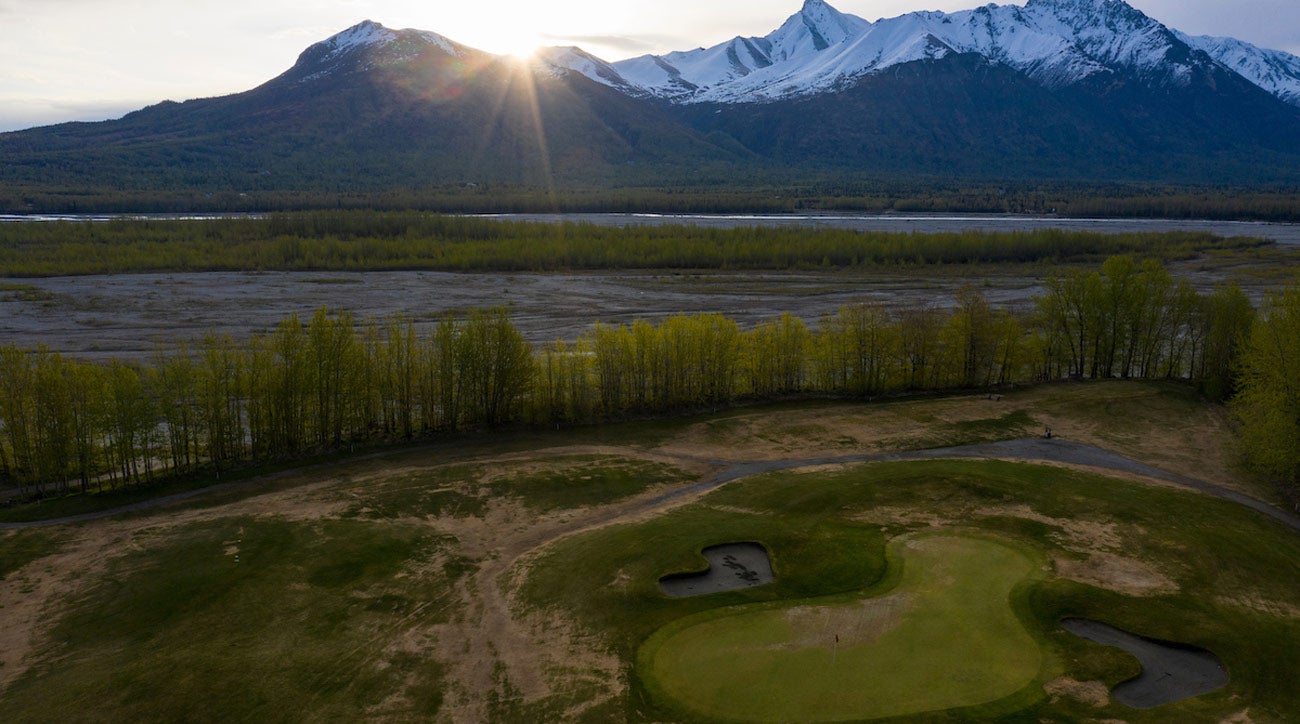
WEDNESDAY
Homer, Alaska: Five days to qualifier
There are only 23 golf courses in Alaska, and every single one is open to the general public — the only state where that’s the case. Some of these courses are in danger of closing, and several are for sale. The season is short: just four reliable months. The population is sparse. The challenges are immense. None of this seems particularly relevant as Chris Morin digs his heel into the gravel on the beach at Halibut Cove and drags it ’round until he makes a sizeable circle. A pipe is his makeshift flagstick.
“What do you call a green that’s not green?” he asks rhetorically. This will be a recurring question throughout my time in Alaska.
I’m across the bay from Homer now, having boated here with Morin and his wife, Shannon. Her family has owned and operated the Kachemak Bay Wilderness Lodge for generations, and it shows: Each cabin/cottage has layers of intricate detail, the product of one improvement at a time, year by year. This is the sort of rugged, “out in it” getaway that people come to Alaska for, but the setup is a cut above: Mark Zuckerberg was among last summer’s Wilderness Lodge clientele.
Morin finishes his excavation by scooping a fistful of gravel from beside the pseudo-flagstick, then scampers off to a nearby yurt, returning with a sand wedge, a driver and a bag of balls. He beckons, and we climb the stairs onto a dock, where a green turf mat sits. The tide is just right for Alaska’s unofficial 24th course to open for play.
In many ways, this is luxury as defined in Alaska: the ability to build your own world. This is the sort of place where scarcity is welcomed, where simplicity is celebrated, where not offering Wi-Fi is actually considered an amenity. And here, before rising waters wash it away, is Homer’s one-hole course across the bay. The summer people will be here soon. They’ll have some trouble arriving. They’ll have far more trouble leaving.
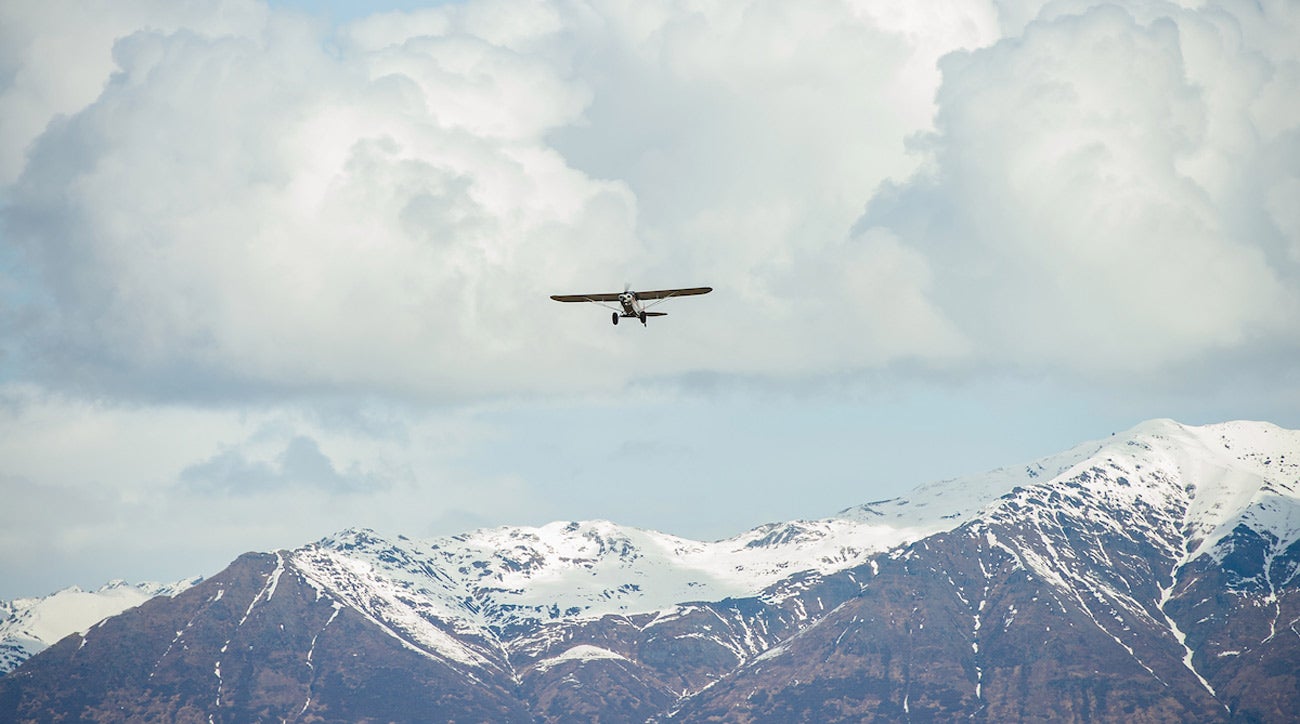
THURSDAY
Soldotna, Alaska: Four days to qualifier
Bill Engberg is standing on a practice putting surface equal parts dirt and sand, and he’s pointing at some leafy green shoots poking through the turf. “What you’re looking at here are only the best greens in Alaska,” he says assuredly. I laugh uncertainly, but he’s not joking.
Head pro Zac Cowan is standing nearby, wearing a golf shirt, sweatpants and no shoes. “He’s right,” Cowan says, nodding at the greens. “Come June, we’ll be growing grass 21 hours a day. We beg for grass to grow — then once it starts it’s like, ‘Wait, no! Slow down!’”
Engberg doubles down. “These things are as good as anything in the lower 48 for three, three and a half months out of the year.” He has some frame of reference; he worked at 10 different golf courses in Palm Springs over the years before returning to the Kenai Peninsula for the endless summer here at Birch Ridge Golf Course, in Soldotna, 60 miles southwest of Anchorage.
I admire their confidence, which is rooted in experience. Cowan was quite literally born into this. His mother’s father designed Birch Ridge, then sold it to his father’s parents, who operated it for decades. “I grew up in the house on the fifth green. My parents still live there. And my grandparents live right next to the clubhouse,” Cowan says. He left, for a time, working his way up the pro ladder. But love and gravity brought him back, and he and his wife bought the family business in 2017.
The season is a little longer in Soldotna than in Anchorage. Soldotna’s temperate climate allows a faster thaw in the spring and later snow in the fall. Still, taking over the course has had its challenges.
“Ice, snow, temperature,” Cowan says, ticking off the complicating factors. “We had rainfall in the middle of this past winter, then it froze, so there were two inches of solid ice on everything. Three or four winters ago, we didn’t have snow pretty much all winter; it was clear and beautiful, but it froze so deep that we had frost heaves and thawing all the way through June.”
Both Cowan and Engberg are among the pros who’ll compete on Monday at the Open qualifier in Palmer. A cutting wind interrupts our conversation; I make an offhanded remark about playing in the cold. Cowan jumps on it.
“What I tell people about the cold is this: Wear a hat! People that want to just play on sunny days don’t live in Alaska and play golf. To us, cold is really nothing.”
There are other entertaining, only-in-Alaska complexities the pro-superintendent duo are eager to share. “The moose here are relentless,” Engberg says. “They like to walk across the greens and dance with the flags — and they just wreck the ground. Every morning we go out and mow the greens and look for moose damage; for these deep hoofprints. You’ll notice we don’t have any red flags, because that makes them mad.”
They remind me, as has everyone, that I’ve arrived a little early for golf in Alaska — a bit like rudely showing up for a party mid-preparation. It’s all locals right now — for another couple of weeks at least. “Once the fishing starts to ramp up, percentage-wise it’s 70-30 tourists,” Cowan says. “And then when they go away, it’s back to locals.”
ADVERTISEMENT

FRIDAY
Anchorage, Alaska: Three days to qualifier
Alaska is filled with golf legends. Rob Nelson, a former Canadian Tour player, is the consensus best-in-state. Greg Sanders won the 2018 Alaskan Amateur by 14 shots. Billy Bomar, a longtime Anchorage pro, won medalist honors at this U.S. Open qualifier in 2009, 2011, 2012 and 2013. Ketchikan-born Danny Edwards likely had the most success of all; he won a handful of Tour events in the ’70s and ’80s. But perhaps nobody has quite the same day-to-day importance to the Alaskan golf scene as Jeremy Peters, who welcomes me to Anchorage Golf Course on Friday afternoon, as the wind begins to roar.
We’re slated to play a round with Marcus Dolejsi, who’s in the field Monday, too. Peters, a journalist-turned-accountant, organizes, catalogues and chronicles a competitive golf ladder, which gives order to the best in state through an ongoing set of free-form challenge matches. Apart from the name on top — that of Nelson — the list shuffles constantly. Peters painstakingly charts all this movement on the Alaska Golf Blog, and no one is better-suited to scout out my local competition in the qualifier.
Keep an eye out, he tells me, for Derek O’Neill, a 32-year-old former military guy turned diehard golfer who chased mini-tour success before settling back into Alaskan life. “He’s a dreamer,” Peters says, “and a tough, competitive guy.” Plus, O’Neill works at Palmer Municipal Golf Course, the host of this year’s event. This will be a home game for him.
But the real home-gamer will be Dolejsi. “Marcus is a great story,” Peters says before we play. Dolejsi, now an electrical engineer in the oil and gas business, grew up on the Palmer course — his father was the pro there. In recent years, Dolejsi has managed several club championships. “He could literally shoot 64 or 84 at Palmer, so that means he could qualify,” Peters says.
Peters’ third favorite among the local set is Adam Baxter, my playing partner in the qualifier. Baxter, a low-key banker from Fairbanks, has been first alternate at the event in each of the last four years. Peters echoes the scouting report on Baxter I’d heard in Homer and Soldotna: “If you want someone to guarantee you’re in the mix, he’s your guy — but he may not be able to go low enough.”
Here at Anchorage GC, on our loop, Dolejsi’s raw power and streaky short game overwhelm Peters. Dolejsi doesn’t say so outright, but it’s clear just how much playing well in the qualifier means to him. “I don’t know anything about the out-of-town guys who’ll be competing,” he says. “But it would be really nice to see a local guy win.”

SATURDAY
Palmer, Alaska: Two days to qualifier
A particularly interesting dynamic of the Alaskan qualifier is the one between Alaskans and interlopers, who I hear referred to gleefully as “foreigners” more than once. Of this year’s 13 competitors, it’s a near-even split: seven Alaskans, six from beyond. The outsiders have come from far and wide to get here. By Saturday, each is getting settled, battling jet lag and an uncommon May chill.
Toru Inatsu has traveled the farthest. The 39-year-old Japanese businessman makes the trip every year from his home in Tokyo. He’s playing in his fifth Alaskan qualifier, though he’s never seriously contended. “It’s challenging,” Inatsu says. “It takes an 18-, 20-hour flight from Japan to here. It’s pretty tough conditions. And then, to qualify — it’s my challenge.”
Inatsu isn’t shy about his goal, realism be damned. “It is, hopefully, to play the U.S. Open Championship,” he says. “That’s the dream.”
The wind is whipping across Palmer GC as golfers are getting in practice rounds. Stephen Goodridge, a North Carolinian with a banjo-player’s beard and a low ball flight, comes off the course shivering. In these kinds of gusts, Palmer has serious teeth. “I hit one drive 350 down the middle,” Goodridge says. “Another one, same club, different wind? Went 220.”
The sun drops lower but the wind keeps howling. Goodridge glances toward the third hole as James Cable, a Scottish competitor, trudges along with a push cart. Rod Hamblin has retreated to the safety of his hotel room, admitting defeat for the day. Hamblin is the closest thing to a Tour player in the group; an aspiring pro who lives in Arizona and plays a serious level of competitive golf. He strikes me as the tournament favorite.
Three of the last five years, an outsider has swept in to seize the qualifier. The locals are particularly taken with Horacio Leon, a Chilean pro who showed up in 2017, battled horrific conditions and posted a 5-under 67 to win by six. The Alaskans like it when the outsiders come. They like it better when they beat them.
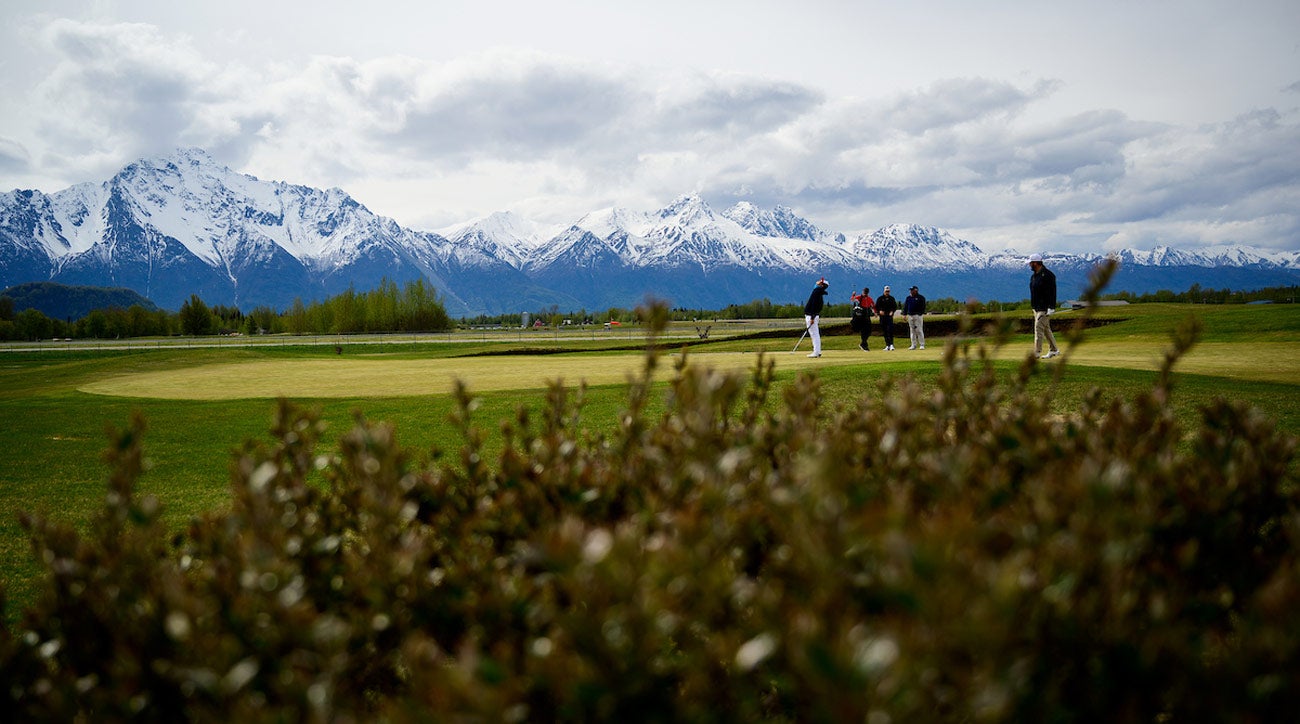
SUNDAY
Palmer, Alaska: One day to qualifier
The bottle of “Regal Apple”–flavored Crown Royal feels like a test. It’s only 8:30 a.m., and I haven’t even had breakfast, but an offer of “birdie juice” has been thrust in my face. I have no choice. “Want some birdie juice?” feels like it means plenty more than that. Like, “Can you hang?” Or, to extrapolate, “Are you a friend or a cop?”
It’s Sunday and this is another practice day — sort of. Really, it’s a community event, a series of matches and a chance to see the locals in action. Palmer Golf Course has come alive before the day’s festivities. This is Herschel Deaton’s “Gaggle,” a shotgun-start event with dozens of eager players volleying friendly daggers about last night’s poker game and the challenge matches to come this day.
Evidence abounds for just how small the Alaskan golf community is. Chris Morin is here, up from Homer, having conveniently scheduled a trip to gather some supplies from the big city. Everyone I meet knows Scott Woodland, though not all have played his nine-holer, which they hear good things about. There’s evidence, too, that mostly what Alaskan golf means has nothing to do with the player who will emerge victorious tomorrow.
Still, everyone’s dialed in. Dolejsi plays the Gaggle, O’Neill chips and putts, and fellow Alaskans Aaron Roth and Tyler Young get in some last-minute work. I’ve met every competitor by this point.
Jeremy Peters has seen to it that I’m paired in an honorary Alaskan challenge match against the “King Pro” himself, Rob Nelson. As an out-of-town media member, I anticipate a level of standoffishness or skepticism from Nelson, but I get none of it. He has an easy way about him; he’s played plenty of big rounds and he’s seen plenty of great golf, and he simply likes things here the best. He steers me around the course, offering specific direction on every shot; I follow his instructions better than even I expect and end up beating him 1-up with a birdie at the last. He seems delighted to have been taken down.
I ask him what the essence of Alaskan golfers are. “I think we’re all thankful,” he says.
ADVERTISEMENT
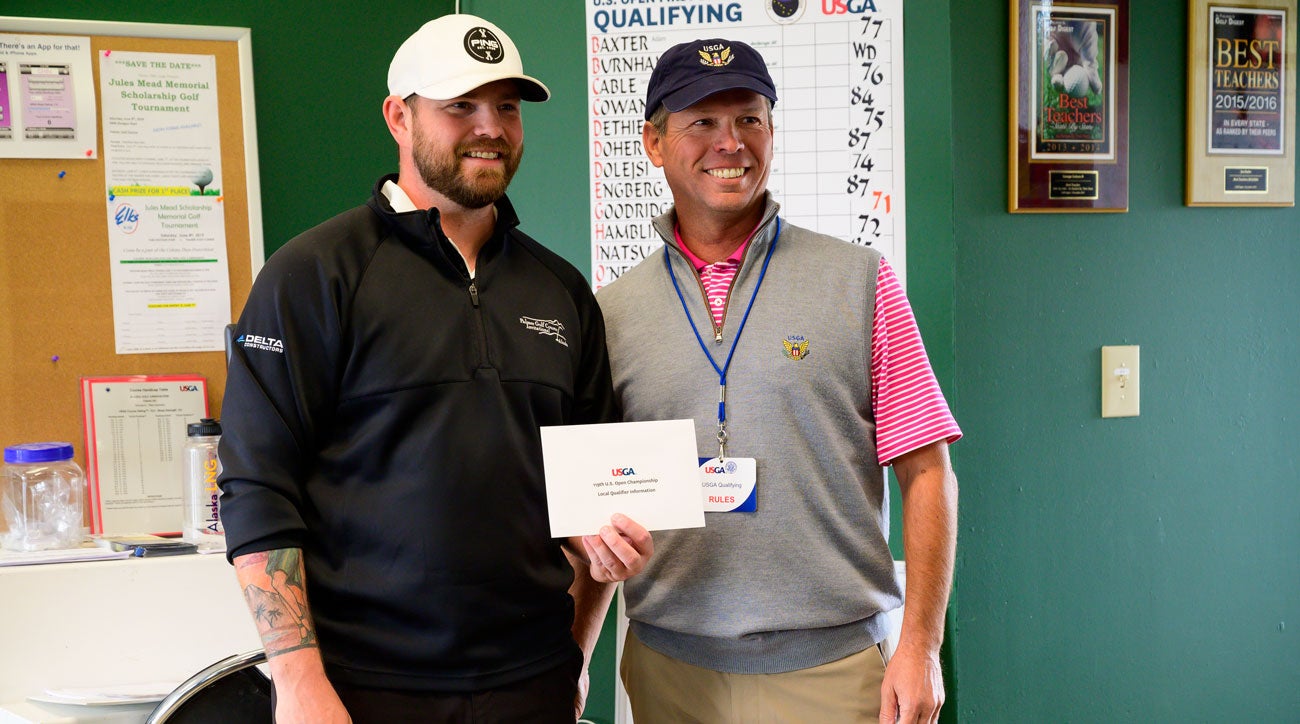
MONDAY
Palmer, Alaska: Qualifier day
May 13th dawns dry, clear and calm — unusual conditions for Palmer, and particularly benign weather for the qualifier. This is the last day of local qualifying across the U.S., and given the late tee times (they started at 11:40 a.m. to maximize warmth), this is the last of 110 sites to begin play.
A series of things happen that would likely not happen at any other qualifier. The morning stimpmeter test returns a “6,” significantly slower (and less predictable) than most PGA Tour greens. My pre-game meal is a reindeer omelette. Just four holes in, only two players remain at even par or better. The near-drivable par-4 10th yields a bogey, two doubles, a triple, a quad and a quintuple-bogey 9, but not a single birdie. During one stretch of slow play, a group of public golfers plays through the final qualifier threesome. The 13-player field makes just 22 birdies total, 14 of which come on the reachable par 5s.
That’s all great fun. But it’s the classic competitive golf moments that turn this into a compelling tournament. At the turn, six players sit within two shots of the even-par lead (this author included). By the 14th hole, it’s a three-horse race between Hamblin, O’Neill and Goodridge, although Dolejsi makes a hole-in-one at No. 15, briefly reentering the conversation.
Hamblin posts first, a surgical even-par 72. He three-putted the first green for bogey, two-putted for birdie at the par-5 11th and made par everywhere else. “Just couldn’t make anything,” he says after the round, delighting the locals who pride themselves on an ability to putt bumpy greens.
He’s bettered by Goodridge, who makes birdie at the difficult par-4 17th and posts 1-under 71. He waits by the chipping green as the rest of the groups begin to come in. The wind picks up slightly, and the scores stay high: 74 for Dolejsi. 76 for Cable. 84 for Cowan. 85 for Inatsu.
I whiff a one-footer at 18 to post 75, landing squarely in the also-ran category, where I’m joined by a Baxter 77. Soon there’s just one group left, which includes O’Neill, who is 1-under on the 17th tee, where a small crowd forms. He makes bogey. But there’s fight in him yet. As Goodridge continues to chip nervously, O’Neill pitches up to six feet at the reachable par-5 18th and pours his putt into the center of the cup. There will be a playoff.
The framing of the sudden death showdown is ideal, pitting a guy so local he works at the cart barn against an outside ringer who will skip town the following day. The play further underscores both the quality and frailty of the competition. They halve the first hole with bogeys; O’Neill three-putts while Goodridge misses a four-footer. Both hit sporty seconds at the next hole, but miss short birdie tries. Play skips to the 17th tee, where tournament organizers have to clear out public play for the twosome and the swelling gallery, which grows to more than a dozen. They halve with bogeys again.
Now to 18. O’Neill knocks his on in two, while Goodridge sends a frisky chip over the edge of the cup and six feet past. His putt bobbles off-line and skirts the left edge of the hole. Goodridge winces, putting his hand to his mouth as he walks after the ball. Nothing to be done about it now.
O’Neill cleans up his two-footer for birdie, plucks it out of the hole and gives a fist pump. He looks relieved more than anything, as the locals swarm him, offering their congratulations. After a brief ceremony indoors, O’Neill lingers outside the clubhouse. He is excited, but that manifests itself in emotion and reflection. This is the biggest win of his life, by far, he notes. It’s a reminder of a dream he thought had slipped through his fingers.
“I’m getting weirdly emotional,” he says in an interview afterwards, thinking back on the years of work and this, the payoff. “It’s been a long time. I mean, in the years leading up to this, it was a grind. A lot of failures — a lot more failures than successes.”
The rest of the competitors disperse into the evening. Hamblin is off to see some mountain views before an evening flight. Inatsu nabs a spot in line at Moose’s Tooth, Anchorage’s famed pizza joint. Cowan and Engberg make the trek back south to Soldotna, eager for another day of growing.
O’Neill pauses on the porch, cold draft in hand, reflecting on his time in golf ’s pro ranks. The win gives him an opportunity to do something special, the chance to catch lightning in a bottle a month later in Walla Walla, Wash., at a U.S. Open sectional qualifier — the last step before a berth at Pebble Beach. He knows that’s unlikely (in fact, he shot 75-83, finishing last among players who completed all 36 holes), and in some ways that doesn’t matter. He’ll be playing at golf ’s next level, proudly . representing the biggest state in the country — and reminding them that there’s golf in Alaska, too.

